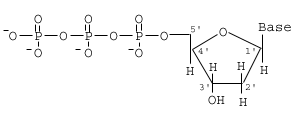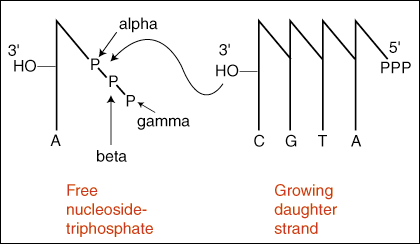Please wait while we process your payment
If you don't see it, please check your spam folder. Sometimes it can end up there.
If you don't see it, please check your spam folder. Sometimes it can end up there.
Please wait while we process your payment
Get instant, ad-free access to our grade-boosting study tools with a 7-day free trial!
Learn more



This site is protected by reCAPTCHA and the Google Privacy Policy and Terms of Service apply.
Create Account
Select Plan
Payment Info
Start 7-Day Free Trial!

Annual
2-49 accounts
$22.49/year + tax
50-99 accounts
$20.99/year + tax
Select Quantity
Price per seat
$29.99 $--.--
Subtotal
$-.--
Want 100 or more? Request a customized plan
You could save over 50%
by choosing an Annual Plan!

SAVE OVER 50%
compared to the monthly price!
| Focused-studying | ||
| PLUS Study Tools | ||
| AP® Test Prep PLUS | ||
| My PLUS Activity | ||
$22.49/month + tax
Save 25%
on 2-49 accounts
$20.99/month + tax
Save 30%
on 50-99 accounts
| Focused-studying | ||
| PLUS Study Tools | ||
| AP® Test Prep PLUS | ||
| My PLUS Activity | ||
No Fear provides access to Shakespeare for students who normally couldn’t (or wouldn’t) read his plays. It’s also a very useful tool when trying to explain Shakespeare’s wordplay!
Erika M.
I tutor high school students in a variety of subjects. Having access to the literature translations helps me to stay informed about the various assignments. Your summaries and translations are invaluable.
Kathy B.
Teaching Shakespeare to today's generation can be challenging. No Fear helps a ton with understanding the crux of the text.
Kay H.
No Fear provides access to Shakespeare for students who normally couldn’t (or wouldn’t) read his plays. It’s also a very useful tool when trying to explain Shakespeare’s wordplay!
Erika M.
I tutor high school students in a variety of subjects. Having access to the literature translations helps me to stay informed about the various assignments. Your summaries and translations are invaluable.
Kathy B.
Teaching Shakespeare to today's generation can be challenging. No Fear helps a ton with understanding the crux of the text.
Kay H.
Create Account
Select Plan
Payment Info
Start 7-Day Free Trial!
You will only be charged after the completion of the 7-day free trial.
If you cancel your account before the free trial is over, you will not be charged.
You will only be charged after the completion of the 7-day free trial. If you cancel your account before the free trial is over, you will not be charged.
Order Summary
Annual
7-day Free Trial
SparkNotes PLUS
$29.99 / year
Annual
Quantity
51
PLUS Group Discount
$29.99 $29.99 / seat
Tax
$0.00
SPARK25
-$1.25
25% Off
Total billed on Nov 7, 2024 after 7-day free trail
$29.99
Total billed
$0.00
Due Today
$0.00
Promo code
This is not a valid promo code
Card Details
By placing your order you agree to our terms of service and privacy policy.
By saving your payment information you allow SparkNotes to charge you for future payments in accordance with their terms.
Powered by stripe
Legal
Google pay.......



Please wait while we process your payment

Sorry, you must enter a valid email address
By entering an email, you agree to our privacy policy.
Please wait while we process your payment

Sorry, you must enter a valid email address
By entering an email, you agree to our privacy policy.
Please wait while we process your payment

Your PLUS subscription has expired
Please wait while we process your payment
Please wait while we process your payment

The Chemistry of the Addition of Substrates of DNA Replication
While the leading strand and lagging strand replicate differently, each individual nucleotide added to each strand is attached through the same mechanism. In this section, we will examine the mechanism of nucleotide attachment. Note: classes such as AP Biology do not require you to know the topics covered in this section.
The building blocks added on to a growing daughter strand are individual
nucleotides. Remember, in DNA the -OH group at the 2' position of the ribose
ring is missing. As a result, the substrates for DNA synthesis are called 2'
deoxyribonucleotides.

Deoxyribonucleoside triphosphates, as we just stated, are the building blocks of DNA. Recall, furthermore, that a complete polynucleotide strand of DNA has only one phosphate group and that through this phosphate group each nucleotide is attached to the next. Why then is the substrate a triphosphate instead of just a monophosphate? The answer to this question lies in the chemistry underlying the addition of nucleotides to a growing daughter strand of DNA.
While each nucleotide added to a growing DNA chain lacks an -OH group at its 2' position, it retains its 3' -OH. This hydroxyl group is used to attack the alpha phosphate group of an incoming nucleoside triphosphate. In the attack, the 3' -OH replaces the beta and gamma phosphates that are ejected from the complex as a pyrophosphate molecule. The result is the formation of the phosphodiester bond between the growing daughter strand and the next nucleotide. The 3' -OH of the newly added nucleotide is now exposed on the end of the growing chain and can attack the next nucleotide in the same way.

The figure above presents a simplified schematic of a growing polynucleotide chain. The lines represent the ribose sugar with one 3' -OH branching from it. Each p represents a phosphate group. This figure illustrates a number of key points of DNA replication. First, we see that the parent strand is oriented in the 3' to 5' direction. Second, each new nucleotide added to the growing daughter strand is complementary to the nucleotide on the parent strand that is across from it and a bond forms between them. Finally, we see how the 3' -OH group displaces the two outermost phosphate groups of an incoming nucleotide in order to add it to the growing chain.
Each incoming nucleotide supplies the energy for its addition in the high-energy bond between the beta and gamma phosphates that are ejected upon addition. It is not the release of the pyrophosphate that drives the reaction, but rather the subsequent hydrolysis that takes place. A much larger amount of energy is released when the two phosphates are separated into individual phosphates through the hydrolysis reaction.
Please wait while we process your payment





